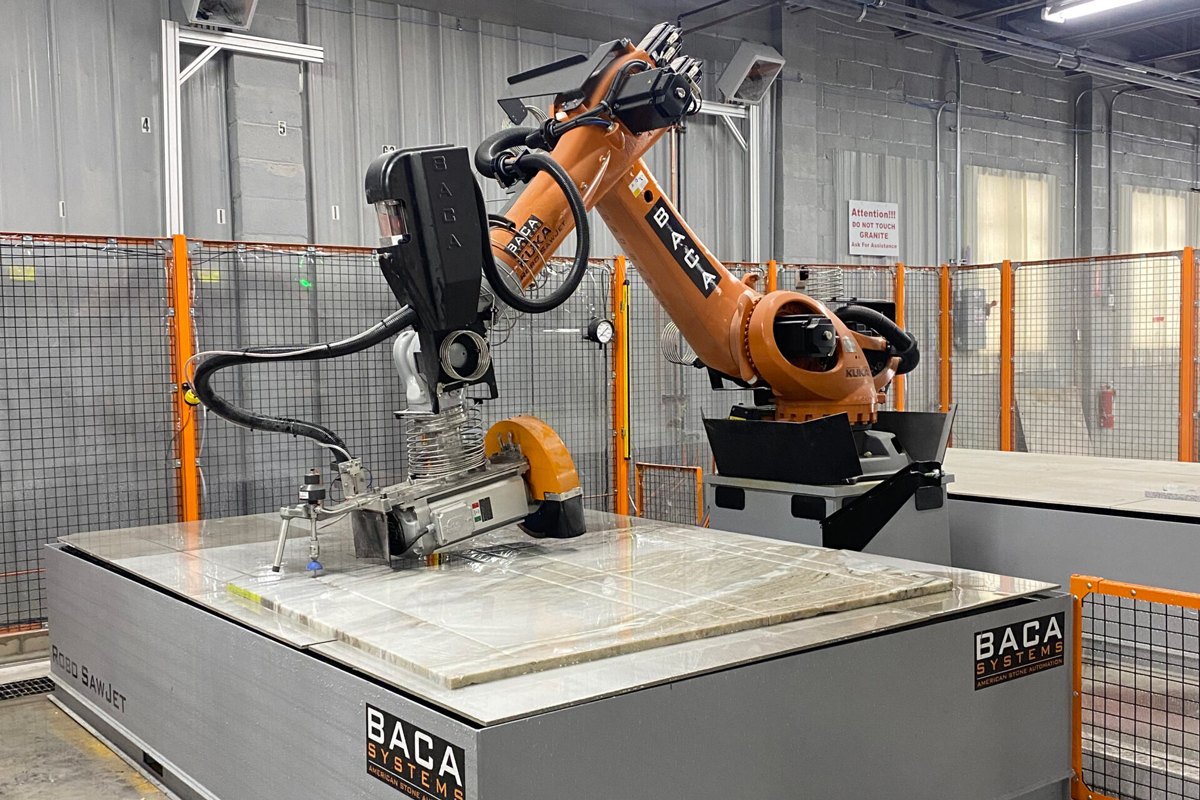Home updates are exciting. When installing new countertops, you’re changing the entire dynamic of your space, whether it’s your kitchen, bathroom, basement, or bar area. The possibilities are endless. But let’s face it – not all installations are equal.
Installations can look very different depending on the company you pick and the equipment they use. That’s why at Youngstown Granite & Quartz, we use the most cutting-edge equipment to ensure precise measurements, cuts and installations. Here is how templating and laser measurements can lead to a better counter install.
What is Laser Templating?
Just like with everything else, preparation is critical when it comes to installing a countertop. That’s where templating comes in. Templating is the process of creating a template that will allow a fabricator to know the exact measurements of a new countertop.
Originally, countertop templating was the manual designing and building of a physical model to scale using cheaper materials before the installation of the countertop.
In the 1990s, the introduction of laser templating changed everything. Human error is no longer part of the equation, as advanced laser technology helps make templates with precise measurements.
The Difference Between Traditional and Laser Measurements
The difference is simple – laser measurements are more accurate. While the old way of measuring doesn’t account for human error, laser measuring eliminates it. There may not be a huge discrepancy when it comes to measuring a perfectly square island, but when there are rounded. However wavy edges with abnormal angles to consider, laser measurements are a huge advantage.
What do “perfect measurements” look like? When it comes to creating the tightest, most quality fit, the measurements have to be exact, down to the fraction of an inch. And while manual measurements can come close to accurate, they won’t be nearly as precise as laser measurements.
Benefits of Laser Measurements
Capturing the data and measurements of a countertop with a laser has huge advantages. Granite, quartz, and porcelain countertops are durable and beautiful, but it’s pivotal to make sure the cut is accurate the first time. It is challenging to adjust a cut if it’s not done precisely the first time.
- Removes guesswork – You’re in control. While the laser sends information to the computer, the technician can add additional information. This information includes specifics about backsplashes, specialty cuts, or cutouts for sinks and faucets.
- Fast and efficient – While manually designing and building a template could take a significant amount of time, laser templating is far more efficient, taking less time to complete.
- Improves accuracy of cutting – Precise measurements mean precise cutting. Laser measuring precisely captures the specific shape of the countertop, accounting for any waviness or bows in the walls, which ensures a perfect fit.
A Smoother Installation
When installing new countertops, the process must be taken one step at a time.
- Select a stone
- Create laser measurements
- Cut the stone
- Installation
Without taking the step to accurately measure how the stone would fit within the existing space, the installation would be a rocky process full of trial and error. Laser measuring makes the entire process smoother, quicker, and more efficient.
Youngstown Granite & Quartz
Remember, a laser is just a tool. When misused, laser measurements won’t do you any good. However, when used by a team with expertise and experience, laser templating can make all the difference.
At Youngstown Granite & Quartz, we combine expert craftsmanship with robotic fabrication to ensure the most precise cuts of granite, quartz, and porcelain countertops for your space.

